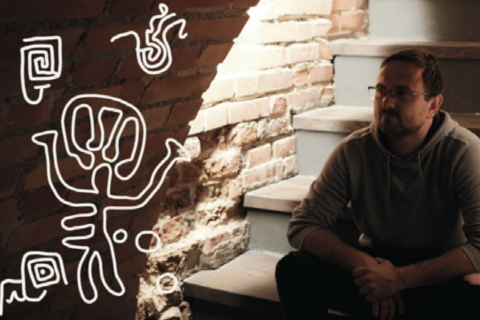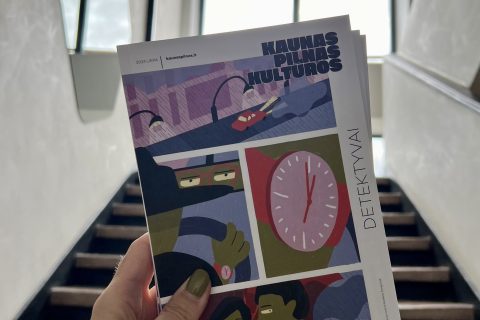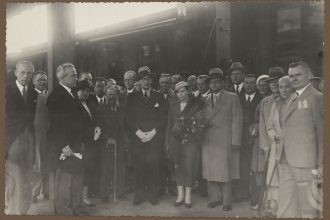“People threw away the 1990s,” Karolis Kaupinis says, when asked which exhibits were the most difficult to find. This man from Vilnius (although his grandmother is from Kaunas) was entrusted to direct the new permanent exposition of the town hall section of the Kaunas City Museum. From July 12 onwards, he invites every citizen, including those visiting here for the first time, to look for answers to the double mystery: what is Kaunas and what is a city?
For the past few years, one of the historical symbols of the city has been closed not only to lovers who were going to get married here, but also to tourists. Construction workers were busy in the building, realizing the vision of the Processoffice architectural firm. Let’s not forget the tribute to heritage preservation. Alongside the architects, the upcoming exposition’s concept – what to show and, more importantly, how to show it – was arranged by the Kaunas Museum staff themselves. During the nearly seven-year process, the museum became more than a workplace for them. They all became a museum.
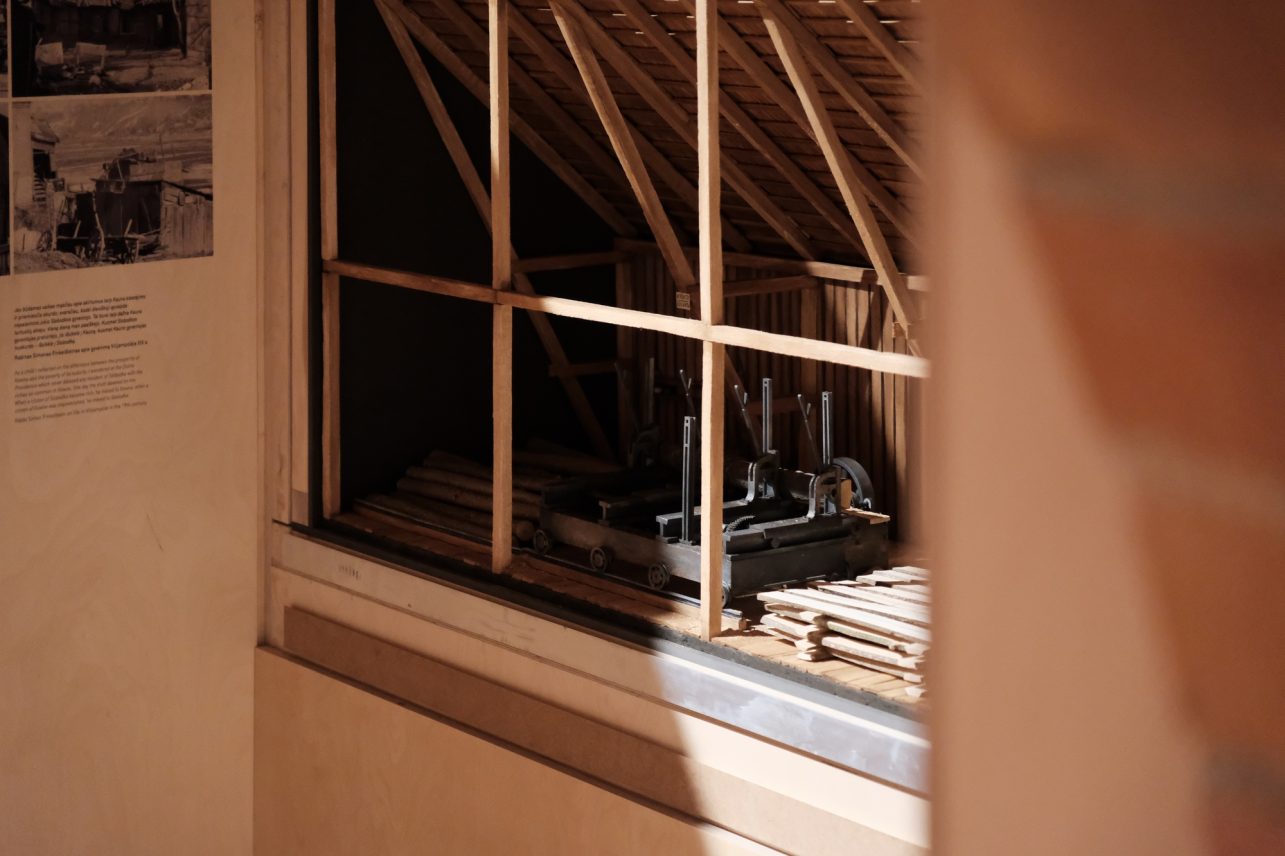
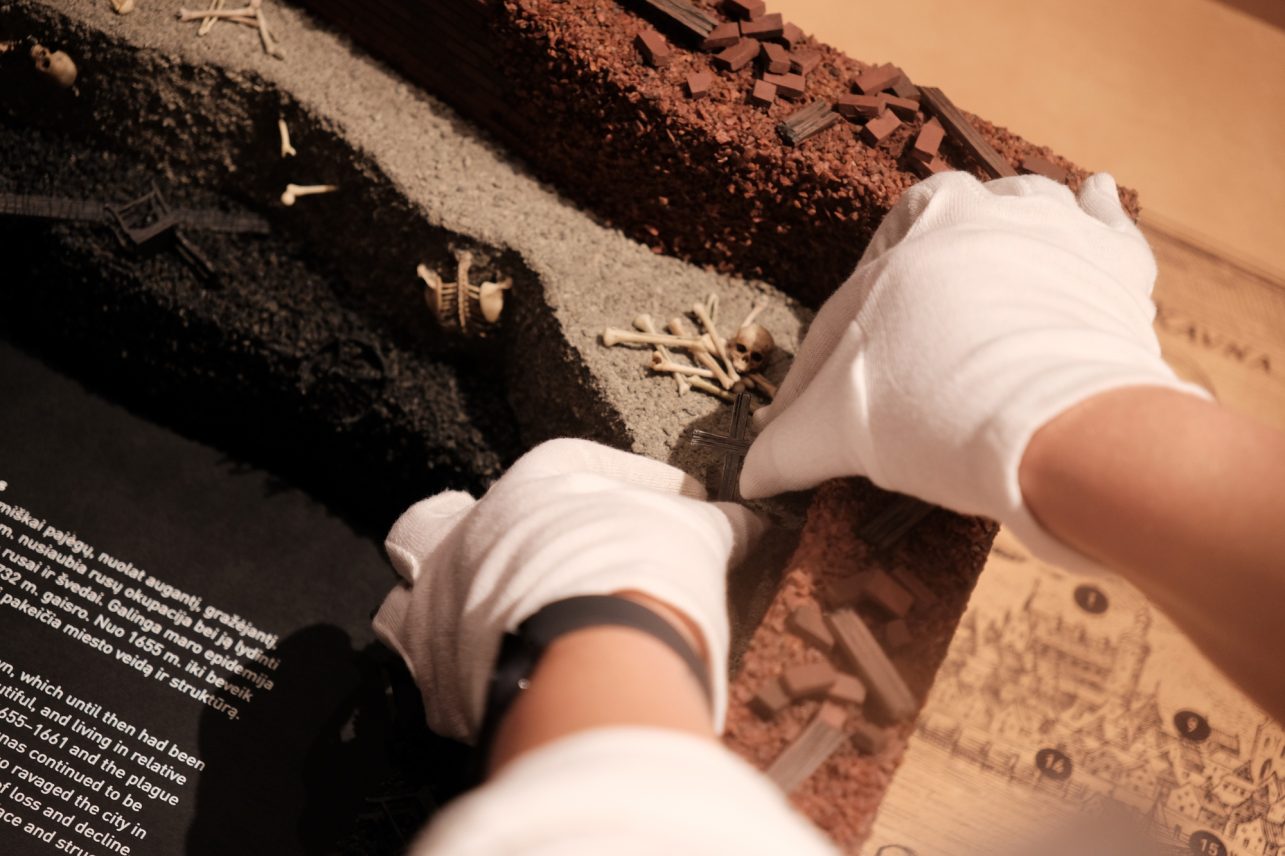
“Before inviting Karolis to join the team, we already knew that we wanted an interdisciplinary exhibition. We don’t want the City Museum to be the territory for historians only, we want to invite anthropologists, sociologists, and urbanists,” Justina Dziakevičienė, Innovation Manager at the Kaunas City Museum, says. “Historically, urbanity is not as intrinsic to the identity of a Lithuanian as it could be, and since it was in Kaunas that a hundred years ago the modern Lithuanian city was created, we realized that this museum is a great opportunity to talk about what a city is in general.”
Being big enthusiasts of Kaunas, the museum staff began to pull the blanket in different directions. To avoid the danger of the exhibition being a hodgepodge of disconnected elements, the director of the film Nova Lituania and Radvila Darius, Vytautas – an audiovisual work of an indescribable genre – was invited to help. “Karolis knows how to think, write, and craft a compelling, engaging narrative. Another of his abilities as a director is to manage the team and the content, ensuring that the ‘blanket’ doesn’t tear. Karolis fused and connected everything,” Justina says.
What to show?
Of course, the director’s task was more than looking at what the Kaunas City Museum has in its collections and making a story out of it. You wouldn’t call such a task a riddle. The director admits that he had to solve more than one puzzle, “Since our history is fragmented, and those gaps are associated with mass destruction, we have little material, and it is often incidental. When you put the story on paper, you immediately think about what could illustrate, symbolize, and help tell it. Well, it turned out that everything was destroyed, stolen, taken away, hidden, forgotten… To some extent, you have to adapt to what is available. On the other hand, you must create a consistent narrative that spans time and space, and then you inevitably need something that isn’t there. Instead, you find something unexpected. Or, if the exhibit is very good, you might even adjust the narrative. You might say that calling everyone, searching, is an unpleasant job but that’s also the most beautiful thing about Lithuania: one way or another, you’ll get what you need, if not through the third person, then through the fourth one.”
The artifacts that were already stored in the Kaunas City Museum’s collections became a small part of the new permanent town hall’s exposition which occupies over 1000 square meters. They looked for the rest in museums, archives, and private collections. Even at home! One colleague contributed a homemade self-defense object made from a bicycle chain and a file. Another provided a deodorant bought at the Merkurijus department store. Karolis also remembered a package of paper for window insulation found while moving his wife’s relatives’ apartment. And why do you need things like deodorant in the exhibition? What does that say about the city?
“We stepped out of the current historical narrative with this new exposition. In general, there are not many city museums in Lithuania; the most dominant are regional museums based on the chronological, state narrative. Wherever you go, you’ll be met with an archaeological exhibition and move towards the present day. But here it’s different. Here you will experience the city’s history through its parts, and in addition, you will understand how it works,” Lina Mikalkėnaitė, who works as a curator in the Exhibitions Department of Kaunas City Museum, says. She holds a list of things that, as she says, seem to be “about nothing”, “For example, a paving tile. It looks simple but it’s not. It helps the blind to move around the city. We’re talking about invisible things that are very important.”
Lina also mentions more fun detective stories that happened during the preparation of the part of the exhibition that talks about the infrastructure of the modern city. According to the director, it was necessary, for example, to find out the amount of salt poured on the streets and what specific brush is used to clean the streets. The waste management companies in Kaunas could not understand it. When asked for a trash can currently used in the city, they gave an old Soviet one saying, “You can see the new ones on the street, why put them in the museum?”
Why town hall?
Karolis insists that his goal was not to definitively answer the questions raised at the beginning of the article but rather to show the range of the answers. “I first asked why we needed a museum. Why does a person need to physically go somewhere today? How is it different from sitting at home and reading everything?” the director asks and then immediately answers.
According to him, first and foremost, in today’s abundance of information, the museum can offer a curated narrative. “To answer what Kaunas is, you need to closely familiarize yourself with the identities and stereotypes that have dominated over time, and then think about what the city is. You also need to analyse urbanism, how cities come about, how similar Kaunas is to other cities in the world, and what urban ideas influenced this city. For example, at the end of the 19th century, when everyone was tired of the pollution caused by industry, the vision of a city garden appeared in Žaliakalnis. Or a planned Soviet city, which not only focuses on urban planning but also on people’s everyday lives. You go through history and try to make Kaunas an example of a city. After all, as a late medieval city, it stands out for its freedoms, unlike the cities to the east.”
So, the town hall, the white swan, whose foundations date back to the mid-16th century, is the symbolic beginning of Kaunas. “A medieval city stands out in the feudal system. A citizen can be free, in a sense that they have rights but also responsibilities to the community,” Karolis reminds us. In his opinion, it is the town hall that is a symbol of freedom, reminding us of what self-government really is: a truly anti-authoritarian object. “It is also important to remember that freedom can lull one to sleep. Kaunas and the whole of Lithuania have already experienced this several times. We need to build a wall because Muscovites will attack. We were late, they came and destroyed everything. Maybe next time we will learn from our history. And then again, no…”
According to Karolis, lessons are encoded in the new Kaunas City Museum exposition.
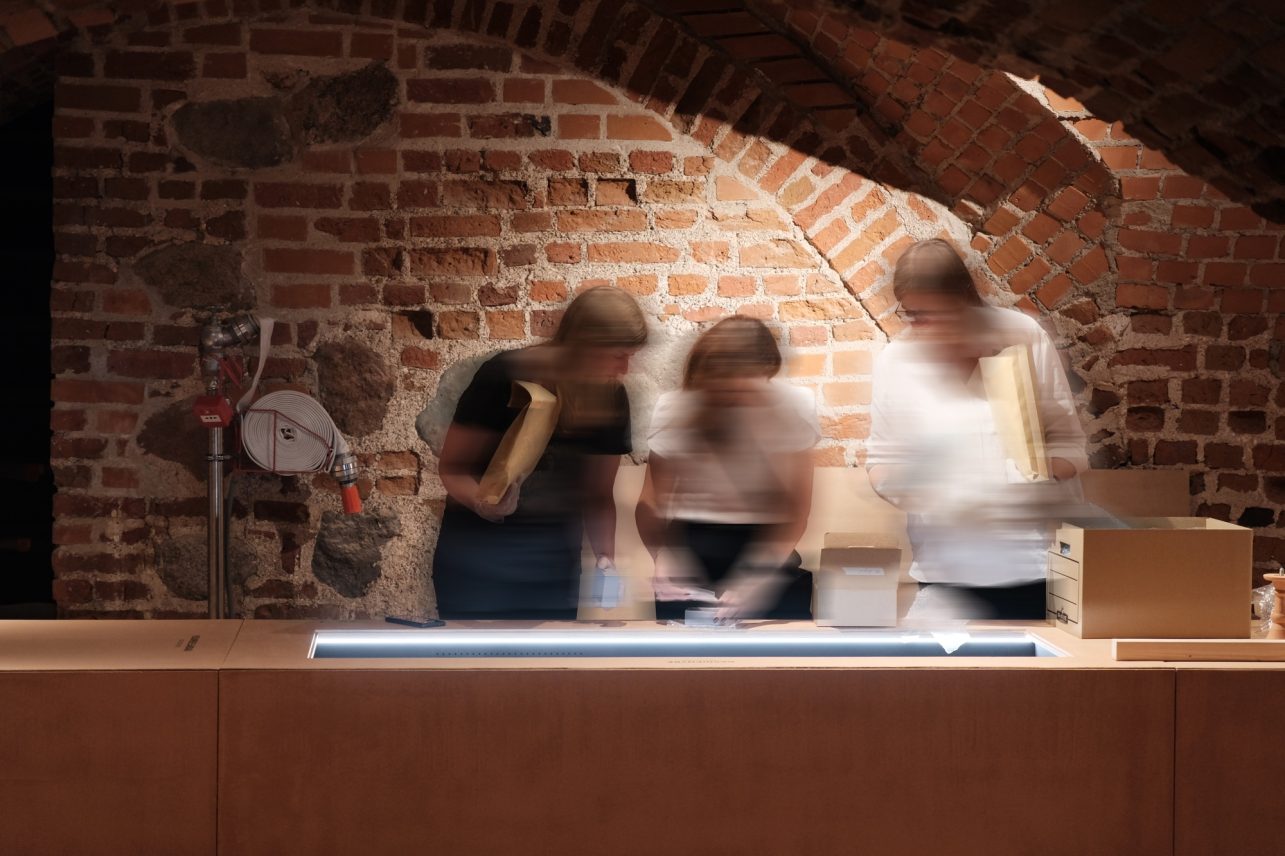

Not a personal project yet an intimate one
“The success of this project lies in the fact that it was led by someone who is not a native of Kaunas. Although we are a mixed working group in terms of origin, experience, and views, without an outside perspective, we might have become subjects of our own research. Most likely, the result would have been flawed, and we would have avoided uncomfortable topics,” Sigita Žemaitytė-Strazdė, head of the Exhibitions Department at the Kaunas City Museum, pondered.
Dr. Jonas Vaičenonis, working in the Kaunas History Department of the Kaunas City Museum, hopes that the new exhibition will first and foremost help the residents of Kaunas better understand their city, “The town hall will provide an opportunity for contemporary urban dwellers to rediscover the districts in which they live. Small stories should play an important role here.”
Rokas Sinkevičius, another museum specialist from the Kaunas History Department, also acknowledges the importance of small narratives. He had recorded the memoirs of witnesses to the partisan war in the past, so he was happy to receive a similar job while preparing the new exhibition. “I went to see artist Vladas Rukša, who took part in the events after the self-immolation of Kalanta. His stories are drastic. I am happy that I was able to include that interview in one of the parts of the exposition, where we talk about what a person sees from the balcony of the town hall. The visitor can take a look at the former psychiatric hospital where Rukša was imprisoned for evading the army.”
The museum employee believes that we can see ourselves in the experiences of ordinary Kaunas residents, whom we encounter every day, “for example, my father also suffered after the Kalanta’s events: he had to leave school. I felt the same way when we created a temporary exhibition about the legendary master of ceremonies, a participant in many events, as well as a creator of traditions and rituals, Kęstutis Ignatavičius. The exhibition will be held in his former office and later replaced by other solo exhibitions. In Kęstutis’ life, you can see the history of your own and many other Kaunas families. After becoming the head of the Civil Registry, he took apart the Soviet marriage system and eliminated elements that did not fit our traditions.”
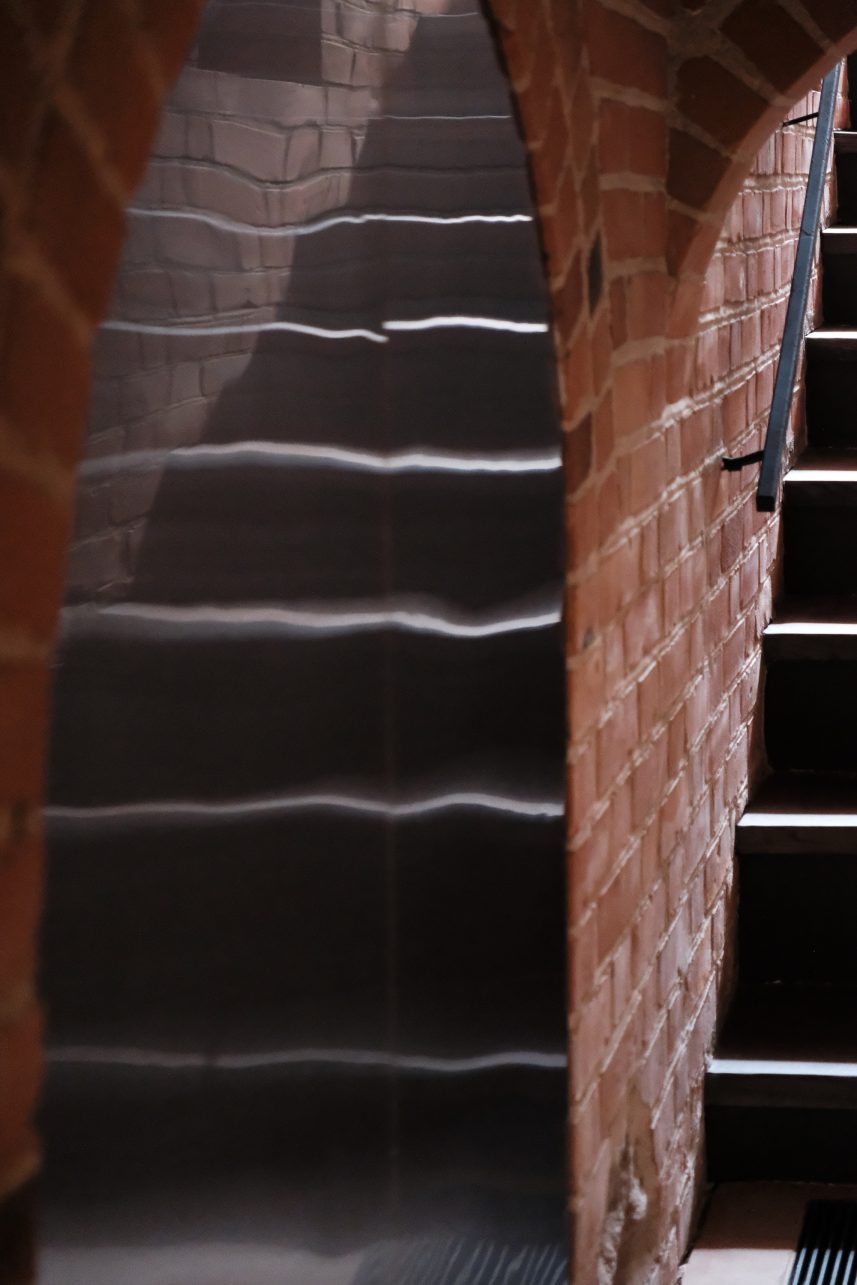
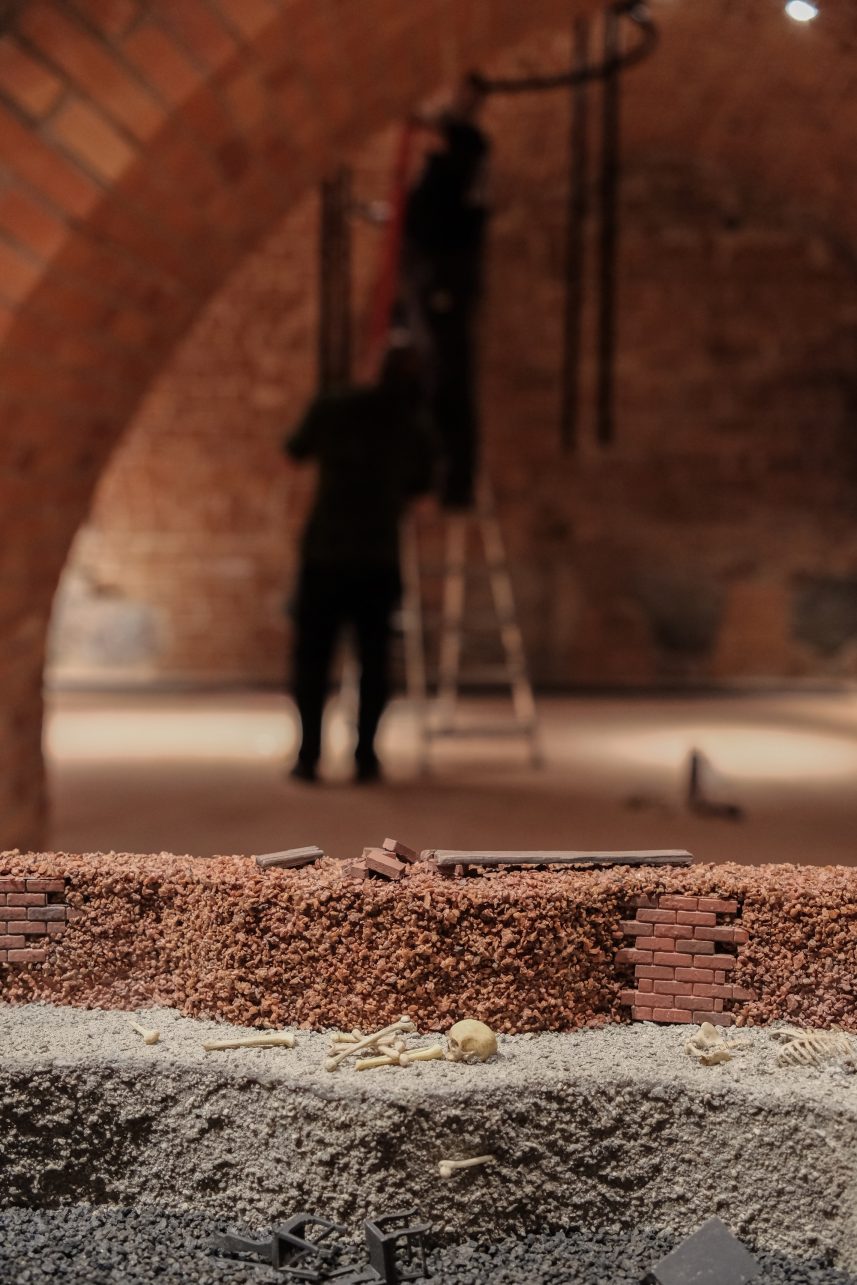
While preparing the great story of Kaunas, the museum representatives, exchanged jobs and tasks, and stepped out of their comfort zones and research areas. “It’s easy to work with a topic you know well, for example, religious minorities in a specific period. But when you find yourself somewhere else, it becomes uncomfortable, start thinking if maybe someone else should handle it, but you take it on, encouraged by colleagues, and you push yourself. If you don’t know something, you ask your colleagues, and they respond because they also care about achieving the best possible result,” Dr. Inga Puidokienė, head of the Kaunas History Department at Kaunas City Museum, tells us about the improved human relations. According to her, the team also discussed topics that might be uncomfortable to bring about in the context of a city museum, such as crime. “Even the stand dedicated to nature sparked various discussions about what should be displayed there. This exhibition gave us a lot of experience, especially in understanding how the city operates.”
“Internal debates only help to clarify the idea. Science comes first because it’s important not to lie, so all those debates ended with accepting the strongest argument,” archaeologist Povilas Gadliauskas, working in the Kaunas History Department at Kaunas City Museum, said.
S. Žemaitytė-Strazdė also speaks positively about the discussions, “The process taught me to be humbler, to step back when someone else’s arguments are stronger, and to accept that my view of Kaunas, even though I sincerely believe in it, may not be the dominant one. After all, this isn’t my personal project, although probably every Kaunas enthusiast would like to tell their own story.”
How did everything fit?
Aleksotas, Šilainiai, Žaliakalnis, Vilijampolė – these and other parts of the city can be explored in the new exhibition and experienced through multiple senses. For example, you can listen. Sound artist Andrius Mackevičius joined the creative team and managed to obtain a recording from the BBC archives dating back to World War II. And there were so many ideas that couldn’t fit… Some of them will be revealed through temporary exhibitions that will take place in the previously unused attic of the town hall.
“As many know, I look at Kaunas from a point of view of water. I tried to convince Karolis to include a vytinė, an ancient boat; perhaps it could fit in Aleksotas and Freda,” Dr. Gediminas Kasparavičius, representing the Kaunas History Department team of Kaunas City Museum, says. Finally, a 3D model of the ship was born out of long discussions, which was a personal victory for the historian. “While preparing the Vilijampolė section with Sigita, I immersed myself in the 1946 flood, which was the most tragic on record. Due to the tasks I performed for the exhibition, I am now directing my personal research towards this area,” the historian mentions another achievement.
“Probably, each person finds their stand the most challenging, but I found Vilijampolė to be especially complicated. You cannot ignore the ghetto and the city’s murdered Jews, but telling this story is hard. I hope we have properly reflected this tragic episode of our history,” Sigita adds.
“As a historian, I am interested in the interwar period, in the time of the temporary capital, so it was fun to work with these topics when preparing the exhibition,” Dr. Simonas Jazavita, a colleague of Gedinimas says. He is also interested in how the city maintained its interwar spirit during the Soviet occupation. “Or someone might say it didn’t retain it. We discussed with Karolis how to insert such complex events as the June Uprising into the narrative, and how to talk about grey areas, like collaboration. After all, the choices of our great-grandparents are also relevant for the modern Kaunas residents. History’s mission is also didactic, prompting reflection on how you would act and fostering empathy for the heroes of the past. Of course, the exhibition will feature both ordinary people and anti-heroes, which is also important. Whether to justify their actions or not will be up to the visitor,” the museum worker says.
The symbols of the city mentioned by Simonas and offered by the Kaunas City Museum include such popular objects as the funicular and Christ’s Resurrection Basilica, as well as, of course, basketball and various notable figures including Jonas Vileišis and Gintaras Patackas. Inga Navickaitė visualized these symbols, and in terms of the list, if you have better suggestions, you can contribute during your visit. After exploring the entire new exposition, visiting the temporary exhibitions, and answering at least one of the questions mentioned in this text, you will be rewarded! You will be able to visit a cafe that will soon open its doors in the town hall. If you meet Justina, Inga, Rokas, Jonas, Povilas, Sigitas, Karolis, Gediminas, Simonas, or Lina discussing some new important topic at the cafe – don’t hesitate and treat them to a coffee.
All photos by Arvydas Čiukšys

